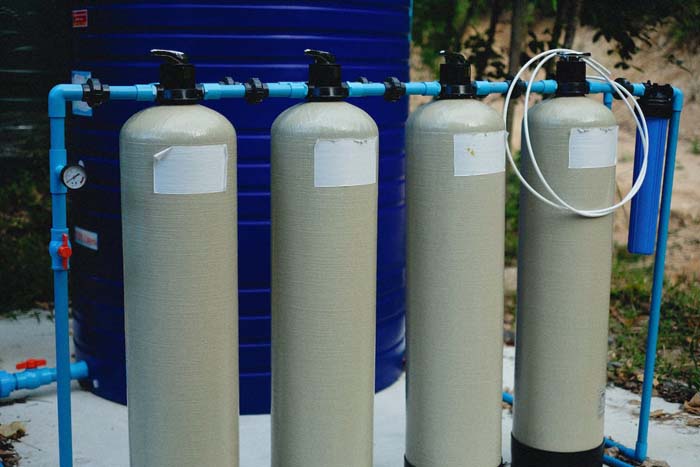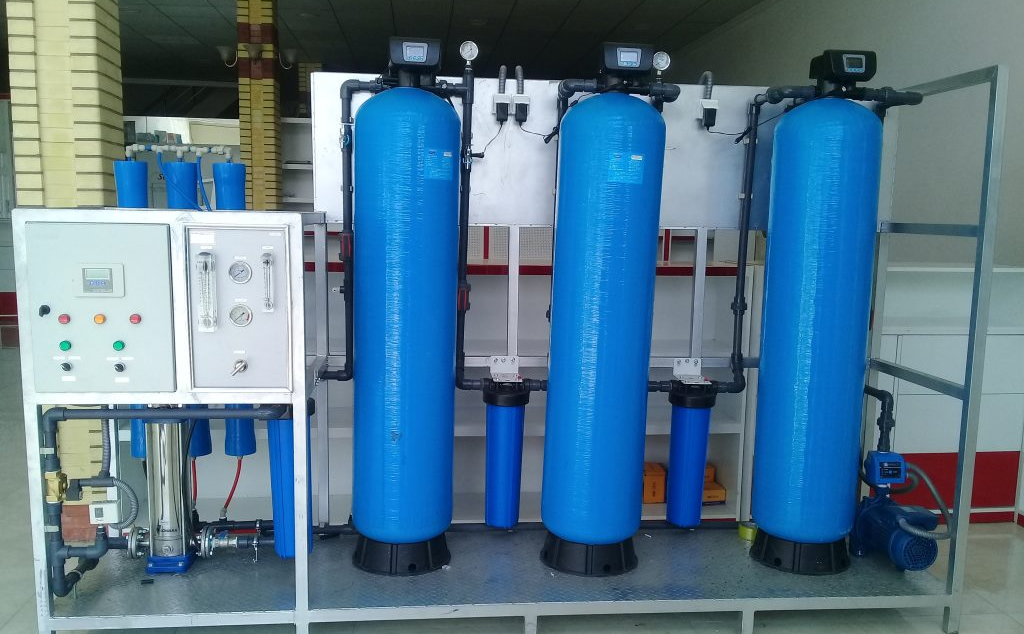
One method to purify brackish water into drinkable water is water desalination. A greater effort must be made to ensure everyone has access to clean drinking water as the global population continues to rise.
The three primary methods for desalinating brackish water are electrodialysis, distillation, and reverse osmosis. Desalinating is the main step. Reverse osmosis desalination is popular for its dependable operation, minimal footprint, and low energy use. Consequently, the reverse osmosis desalination procedure is typically employed for brackish water desalination.
Here are the best filters for brackish water.
Reverse Osmosis Filtration
The heart of every desalination process for brackish water should be reverse osmosis. The primary step in desalinizing brackish water into fresh water is reverse osmosis. This can trap viruses, heavy metal ions, dissolved salt, and bacteria in the water.
Microfiltration
Filtering consumables and security filters make up the bulk of the microfiltration system. Brackish water has a very high salt concentration. Hence, security filters often use corrosion-resistant FRP filter housings. Depending on your needs, you can choose between FRP bag filter housings and FRP cartridge filter housings.
Both the available land space and the need for water flow on site can help determine the filtration consumables. Selecting high-flow filters is an option when dealing with high water requirements and limited land area. Alternative options include liquid filter bags, string-wound cartridges, and melt-blown cartridges where water flow and land area are unnecessary.
Sedimentation, Coagulation, Disinfection
Viruses, bacteria, and other microorganisms are present in brackish water. For this reason, it’s important to disinfect it with sodium hypochlorite before adding medicine and coagulation. Then, to reduce the turbidity of the brackish water, add flocculant and coagulant to the mixer to settle the colloids and suspended substances.
Coarse Filtration
An activated carbon filter and multi-media filter make up the bulk of the coarse filtering. The multi-media filter eliminates manganese, suspended matter, large particles, iron, and colloids for brackish water. The primary function of an activated carbon filter in brackish water treatment is to remove any lingering chlorine, colloid, organic contaminants, or off-putting odors. In order to prepare the water for the next stage of filtration, the coarse filter primarily works to decrease the water’s chromaticity and turbidity.
Can you use table salt for brackish water?
Table salt cannot be used for brackish water due to the absence of these extra-dissolved substances.
The cheapest way to desalinate water
The fact that all living things require water as a resource is common knowledge. However, freshwater accessibility has become a significant concern. This is due to the world’s growing population and the negative consequences of climate change. Desalination, which involves filtering salt and other contaminants out of brackish water to make it drinkable, is a new and exciting development in this area. However, how can we desalinate water at the lowest possible cost?
- Reverse Osmosis:
Because it is both practical and effective, reverse osmosis has quickly become the desalination method of choice. The process involves forcing saltwater through a semi-permeable membrane. This allows molecules of water to pass through but prevents salt and other contaminants. The widespread availability of reverse osmosis systems makes their installation cheap. Another advantage is that the procedure uses less energy than other desalination technologies. On the other hand, maintaining and replacing membranes can raise operational costs.
 Electrodialysis:
Electrodialysis:
One such desalination process that uses an electric field to extract salt ions from saltwater is electrodialysis. This method efficiently removes salts by employing a succession of ion-exchange membranes that let only certain ions flow through. This method has unique ion removal capabilities, which make it useful in several industrial contexts. Nevertheless, the operational costs increase due to the regular cleaning of the membrane and the relatively poor water collection rates. Also, electrodialysis plants have a hefty initial investment.
- Pressure-retarded osmosis:
Using the difference in osmotic pressure between saltwater and a concentrated solution, a new desalination technology called pressure-retarded osmosis can produce drinkable water. The process uses a semipermeable membrane to create clean water by allowing freshwater molecules to flow, especially from the salty side, to the concentrated solution. One possible benefit of PRO is that it can take advantage of the salinity gradient that exists between freshwater and saltwater. Nevertheless, additional study is necessary to improve the technology’s effectiveness and lower operational costs, as it is still in its early phases.
- Solar Desalination:
Solar desalination, which uses the sun’s energy to produce salt, is gaining popularity as a green and economical option. Solar stills gather the condensed vapor as freshwater by evaporating seawater using the sun’s heat. Solar desalination uses renewable energy sources.
This means there’s a need for less fossil fuels. Not to mention that it may work even in the most remote places, and it just takes very simple technologies. However, not all places are appropriate for solar desalination. This is because it is so dependent on favorable weather conditions. Another potential deterrent to solar desalination plants’ broad use is their high startup and ongoing maintenance costs.
Can you boil brackish water?
No. Even less drinkable after boiling, brackish water retains a higher salt percentage. The removal of pathogens and bacteria from boiling the water makes it partly decontaminated. Before drinking, it must still undergo reverse osmosis or distillation to remove the salt.
As the water in the container starts to evaporate when heated, the volume of water decreases, and the salt remains behind. Heated seawater will retain its saltiness unless this vapor is eliminated.
The disadvantages of desalinating brackish water
Building and running it is expensive.
A seawater desalination plant has exorbitant startup and running costs. A manufacturing facility’s construction budget may be as high as $2.9 billion. After it’s up and running, the factory is somewhat energy-demanding. Energy costs make up around a third to half of the total production cost. Since energy is a major component, fluctuations in energy prices significantly impact the whole cost.
Environmental impact.
Another drawback of the desalination of brackish water reverse osmosis plants is their influence on the environment. Eliminating salt from water is a significant challenge. Brine is a type of discharge that has the potential to alter the salinity and oxygen levels in the treatment site’s water. When desalinating brackish water, a great deal of potentially dangerous chemicals are either utilized or created, such as hydrochloric acid, carbon dioxide, and chlorine.
Conclusion
Finding the most cost-effective desalination method can be somewhat challenging despite multiple options. Due to its efficiency and low cost, reverse osmosis is currently a popular choice. More cost-effective alternatives may become available in the future, though, as a result of continuing research and development in technologies like electrodialysis, pressure-reduced osmosis, and solar desalination.
A desalination plant’s initial investment, energy needs, ongoing operating costs, and maintenance need careful consideration. To guarantee a long-term and cost-effective remedy for water shortages, additional research and funding into desalination technology are essential, especially in light of the ever-increasing worldwide need for freshwater.
